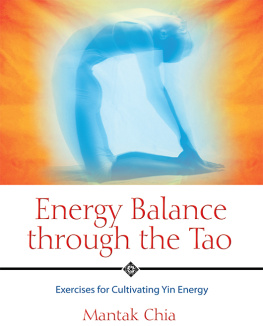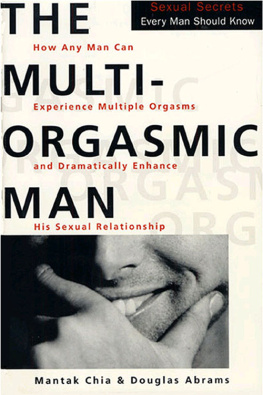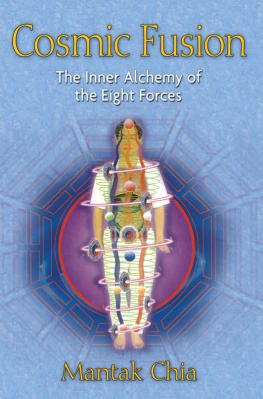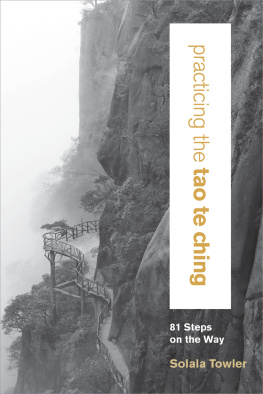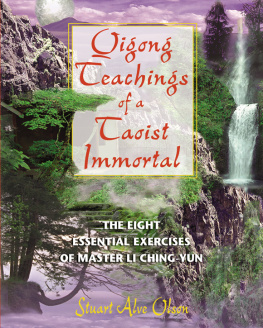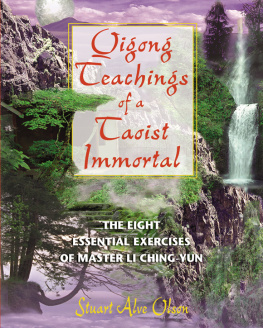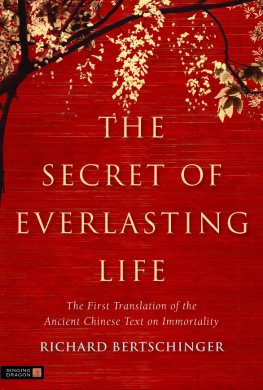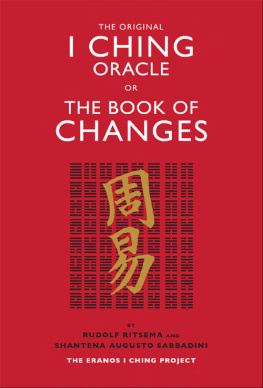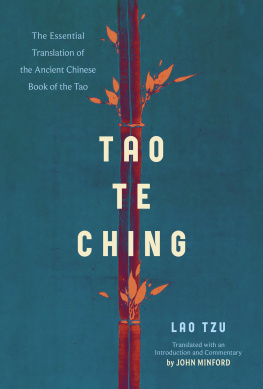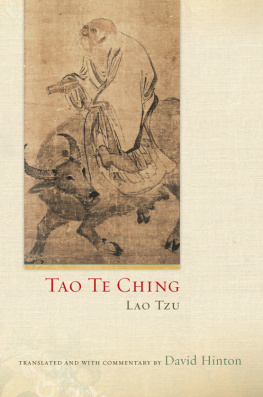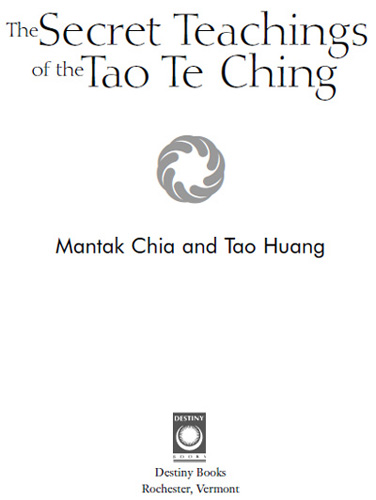
Acknowledgments
The Universal Tao Publications staff involved in the preparation and production of The Secrets of the Tao Te Ching extends our gratitude to the many generations of Taoist masters who have passed on their special lineage, in the form of an unbroken oral transmission, over thousands of years. We wish to thank the thousands of unknown men and women of the Chinese healing arts who developed many of the methods and ideas presented in this book.
We thank Taoist master I Yun (Yi Eng) for his openness in transmitting the formulas of Taoist inner alchemy. We offer our gratitude to master Lao Kang Wen for sharing his healing techniques.
We offer our eternal gratitude and love to our parents and teachers for their many gifts to us. Remembering them brings joy and satisfaction to our continued efforts in presenting the Universal Tao System. Their contribution has been crucial in presenting the concepts and techniques of the Universal Tao.
We wish to thank Susan Bridle and Vickie Trihy for editing the new edition of this book, and the following people who worked on the first edition: Dennis Huntington for his editorial work and writing contributions; Colin Campbell and senior instructors Rene J. Narvarro and Annette Derksen for their insightful contributions; and Marion Knabe for her editorial assistance with early drafts of the book.
Thanks to Juan Li for the use of his beautiful and visionary paintings, illustrating Taoist esoteric practices. Special thanks also to Raruen Kaewapadung, computer graphics; Saysunee Yongyod, photographer; and Udon Jandee, illustrator.
Putting the Teachings into Practice
Chinese medicine and Chi Kung emphasize balancing and strengthening the body so that it can heal itself. The meditations, internal exercises, and martial arts of the Universal Tao are basic approaches to this end. This book contains descriptions of physical and spiritual practices that have been used successfully for thousands of years by Taoists trained by personal instruction. Readers should not undertake these practices without receiving personal instruction from a certified instructor of the Universal Tao because some of these practices, if done improperly, may cause injury or result in health problems. This book is intended to supplement individual training with a Universal Tao instructor. Anyone who undertakes these practices on the basis of this book alone does so entirely at his or her own risk. Follow the instructions for each exercise carefully. The Universal Tao and its staff and instructors cannot be responsible for the consequences of any practice or misuse of the information in this book.
Introduction: Conveying the Heart of Lao Tzus Teaching
Based on the ancient Chinese sage Lao Tzus Tao Te Ching, The Secret Teachings of the Tao Te Ching is the result of collaboration between contemporary Taoist masters Mantak Chia and Tao Huang. The authors bring their deep knowledge and experience of Taoist philosophy and practice to this mystical scripture and illuminate its meaning for Western readers.
Tao Huang, with assistance from Edward Brennan, offers a new translation of the Tao Te Ching, and Mantak Chia and Tao Huang together offer penetrating discussion and meditation on the text. The Secret Teachings of the Tao Te Ching also provides a number of practices and meditations to enable the reader to vitalize the body and mind and open oneself further to the inner meaning of Taoist teachings. The authors at times bolster traditional Taoist perspectives with corroborating contemporary scientific knowledge. They also periodically draw on the wisdom of the ancient Chinese I Ching, or Book of Changes. Above all, they seek to bring the inner essence of the Tao Te Ching to life through transmitting the heart of Lao Tzus teaching.
LAO TZU AND THE TAO TE CHING
For over 2,500 years, the five thousand pictographs of the Tao Te Ching have been regarded as among the greatest treasures in the world. The scripture is the basis of Laoism (the Chinese philosophy expressed in the writings attributed to Lao Tzu) and Taoism (the religious tradition based on this philosophy that has developed over the centuries).
The Tao Te Ching, roughly meaning Classic of the Way and Virtue, is popularly attributed to Lao Tzu, who, according to tradition, was an older contemporary of Confucius born in the sixth century B.C.E. Lao Tzu was born Li Er. His legendary name, Lao Tzumeaning the old philosopher or the ancient childrose from his mothers lips as she delivered him under a plum tree. His white hair gave him the countenance of an aged man, which elicited his mothers cry of joy upon seeing him emerge into this world.
During his lifetime Lao Tzu worked in the capital as an archivist in the Imperial Library of the Zhou Dynasty court. This enabled him to reconstruct the spiritual paths of many enlightened sages and holy men who came before his time. After having meditated for three years in a cave in northwest China (now known as Lao Tzus Cave), he achieved his enlightenment.
According to legend, Confucius met Lao Tzu in Zhou, where Confucius was going to study the library scrolls. Confucius, over the following months, discussed ritual and propriety, the central tenets of Confucianism, with Lao Tzu. Lao Tzu criticized what he felt to be hollow practices. Taoist legend holds that these discussions proved far more fruitful for Confucius than all of his academic studies.
Lao Tzu eventually resigned from his post at the Imperial Library and retired to the mythical Kun-lun mountains. He transmitted his teachings to a border guard who convinced him to write down his wisdom before disappearing from society. The result was the Tao Te Ching.
This short and poetic work is one of the most influential of all Chinese philosophic and religious texts. Its influence has also spread widely outside the Far East and is probably the most translated Chinese book. The Tao Te Ching is divided into two parts, the Tao Ching and the Te Ching, and into eighty-one chapters. Each chapter is succinct, using few characters to poetically express subtle ideas. Many chapters lend themselves to multiple levels of interpretation, from guidance on political leadership to instruction on higher spiritual development.
ESSENCE ILLUMINATED
Tao Huang, during a powerful spiritual experience that took place on the winter solstice in 1988, experienced a direct mind-to-mind transmission from the old master Lao Tzu himself. Tao Huang explains, He came to me through meditation. It was the beginning of the heart-sealed teaching of my life, or direct spiritual initiation.
In The Secret Teachings of the Tao Te Ching, Tao Huang and Mantak Chia shed light on the essence of the Tao Te Ching through their in-depth and personal knowledge of Taoist philosophy and practice. It is the first book to integrate meditation, interpretation, and illustration in its illumination of the text. The essence of this project is more experiential than conceptual in nature, explains Tao Huang, even though it is laced with all sorts of Taoist concepts. Taoism is all about experience.
The Secret Teachings of the Tao Te Ching particularly deals with the nature, meaning, and practical ramifications of Tao and Te, two principles of utmost importance in Taoism. The word Tao does not have an English equivalent; it can be translated as God, creation, nature, universal essence and its manifestation, or the Way of all life. Te is similarly difficult to translate; it refers to action, virtue, morality, beauty, and gracious behavior. The Secret Teachings of the Tao Te Ching
Next page

